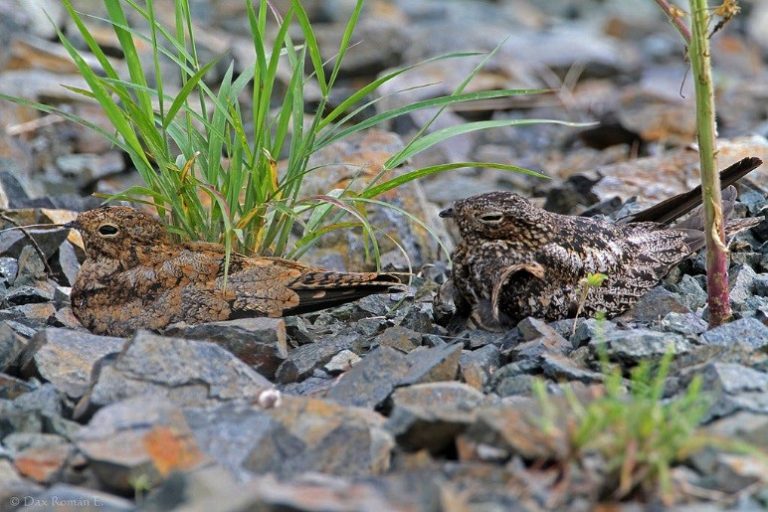Birdfinding.info ⇒ Across most of its breeding range, largely confined to dry, open habitats with sparse vegetation, and as likely to be found in cities as natural areas. In southern Florida, reliably found at the Key Deer National Wildlife Refuge, and in the vicinities of the Marathon and Key West airports, where it nests. From April to July, from late afternoon into evening, Antillean Nighthawks can be heard and seen flying around these airfields and adjacent areas, particularly over nearby mangroves. On Puerto Rico, found mainly along the coasts: e.g., San Juan, La Parguera, and Cabo Rojo National Wildlife Refuge. In the Dominican Republic, the vicinities of Lago Enriquillo and Monte Cristi National Park have significant populations. On Jamaica, the Black River Morass and Robin’s Bay are reliable sites. Common across much of Grand Cayman, especially in West Bay at sites such as Barkers National Park and Safehaven.
Antillean Nighthawk
Chordeiles gundlachii
Breeds in the West Indies and southern Florida. Wintering grounds unknown, presumably in South America.
Breeding. Breeds in the Florida Keys, the Bahamas, Turks & Caicos, Cuba and some of its keys, the Isle of Youth, Jamaica, Hispaniola, Puerto Rico, the Virgin Islands, and Guadeloupe. May also breed locally or sporadically in the Leeward Islands. Common but localized across most of its breeding range, occurring mainly in dry scrub, savannahs, salt pans, and urban areas (nesting on flat, graveled roofs).
Movements. Arrives on its breeding grounds in March and April, and departs between August and October. There are scattered records of migrants from Aruba, Curaçao, and the Lesser Antilles, but no well documented records from South America—although the entire world population evidently winters there. Spring overshoots have been recorded north to Louisiana, North Carolina, and Bermuda.
Identification
Very similar to Common Nighthawk, which migrates throughout Antillean’s range—best distinguished by voice. Also resembles Lesser Nighthawk, which likely overlaps widely with it during migration and winter.
Has a typical nighthawk pattern of cryptically mottled upperparts and paler, barred underparts. Within those parameters, its plumage is highly variable. Some sources refer to the existence of rufous and gray “morphs,” but photographic evidence portrays a broad spectrum of appearances. The mottling can be either speckled or leaflike, and the coloration ranges from mostly white-and-black to pale gray to rich rufous-and-brown.
Like its closest relatives, has prominent white bands across the primaries, visible mainly in flight. The band is somewhat closer to the wingtip than to the wrist.

Antillean Nighthawk, male showing predominantly buffy and rusty mottling. (Dominican Republic; September 2, 2018.) © Kenny Diaz
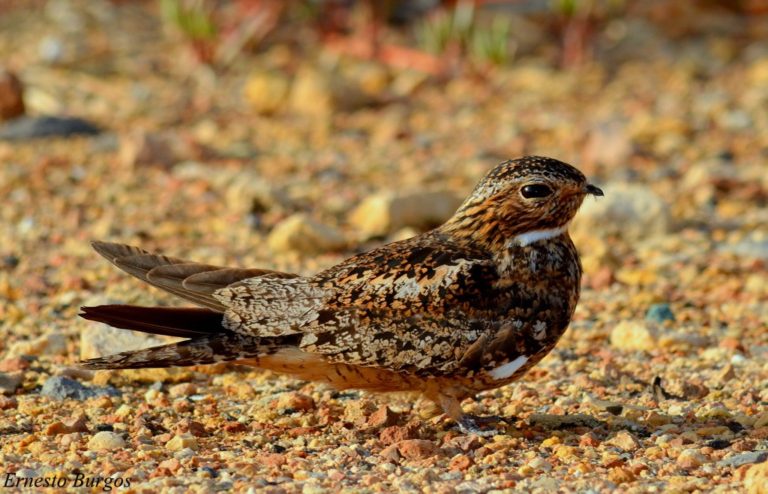
Antillean Nighthawk, male showing a spectrum of grayish, buffy, and rusty mottling, and a mostly blackish chest. (Puerto Rico; June 23, 2013.) © Ernesto Burgos

Antillean Nighthawk, male showing a spectrum of grayish, buffy, and rusty mottling, and a mostly blackish chest. (Puerto Rico; June 23, 2013.) © Ernesto Burgos
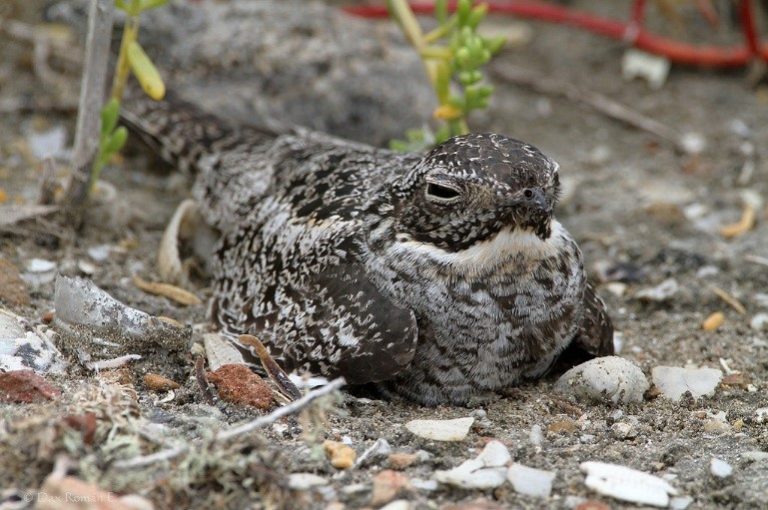
Antillean Nighthawk, male showing predominantly whitish and gray mottling. (Dominican Republic; June 1, 2013.) © Dax M. Román E.
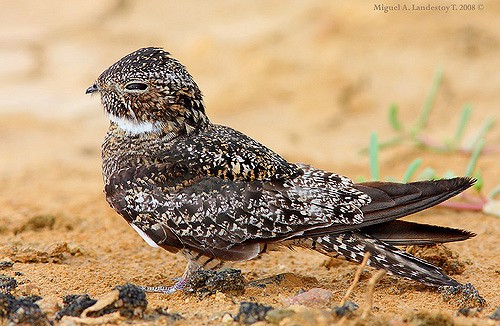
Antillean Nighthawk, male showing predominantly white mottling interspersed with rusty flecks. (Monte Cristi National Park, Dominican Republic; June 14, 2008.) © Miguel A. Landestoy T.
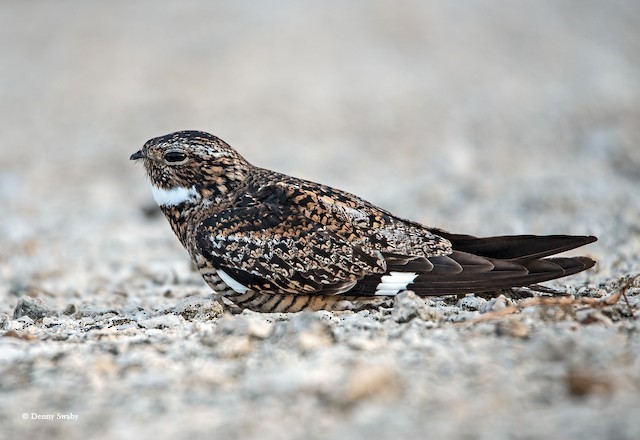
Antillean Nighthawk, male showing an array of white, buffy, and rusty mottling. (Volgunner’s Pond, Grand Cayman; June 14, 2017.) © Denny Swaby

Antillean Nighthawk, male showing predominantly whitish and gray mottling, and a pale grayish chest. (Dominican Republic; May 30, 2013.) © Dax M. Román E.
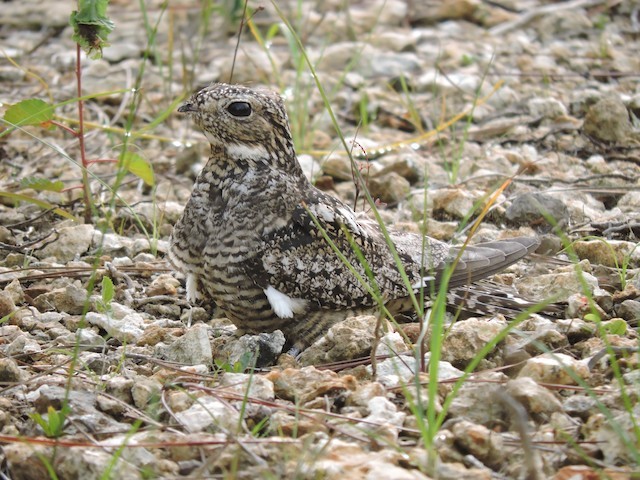
Antillean Nighthawk, a pale male showing predominantly whitish and gray mottling. (Marsh Harbour, Abaco, Bahamas; June 16, 2018.) © John Patten Moss
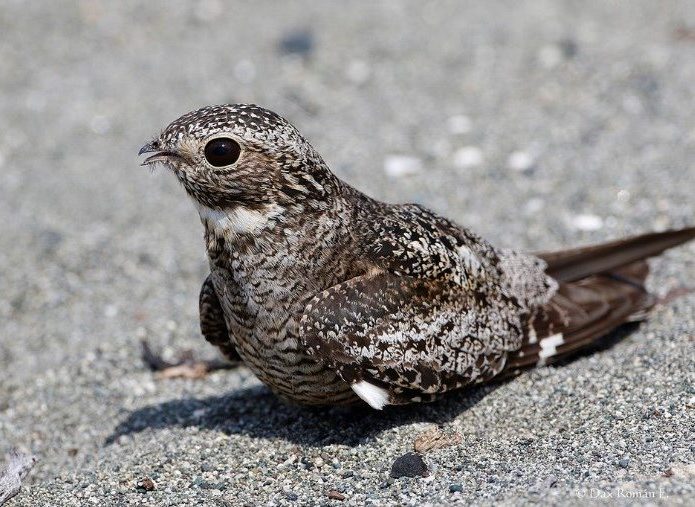
Antillean Nighthawk, male showing predominantly whitish and gray mottling, with some brown tones. (Dominican Republic; June 18, 2016.) © Dax M. Román E.
Males differ from females in having larger white patches on the throat and wings—and a thin white band on the tail, always visible from below, but from above only when spread.

Antillean Nighthawk, showing a spectrum of whitish, buffy, and rusty mottling. (Warderick Wells Cay, Exuma, Bahamas; July 30, 2014.) © Bruce Purdy
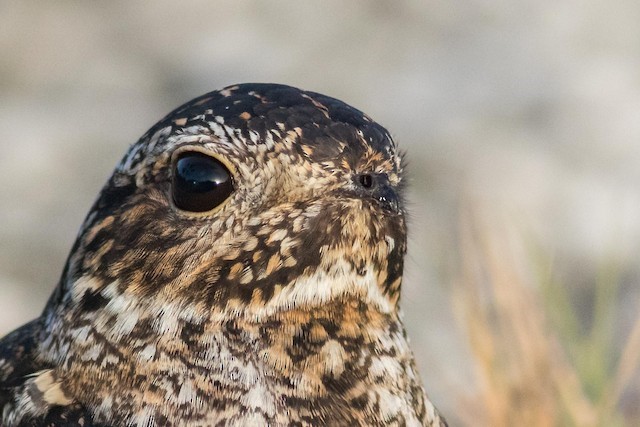
Antillean Nighthawk, female showing a spectrum of whitish, buffy, and rusty mottling, and a mostly blackish crown. (Michelson, Exuma, Bahamas; July 10, 2018.) © Noah Frade
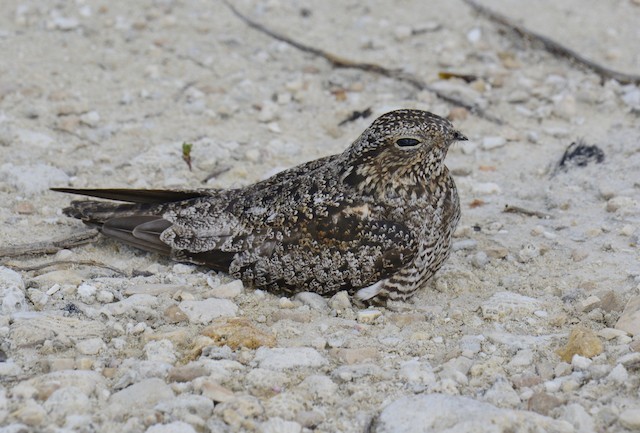
Antillean Nighthawk, female showing predominantly grayish mottling. (Westerly Ponds, Little Cayman; July 5, 2017.) © John & Linda Prentice/Gindler
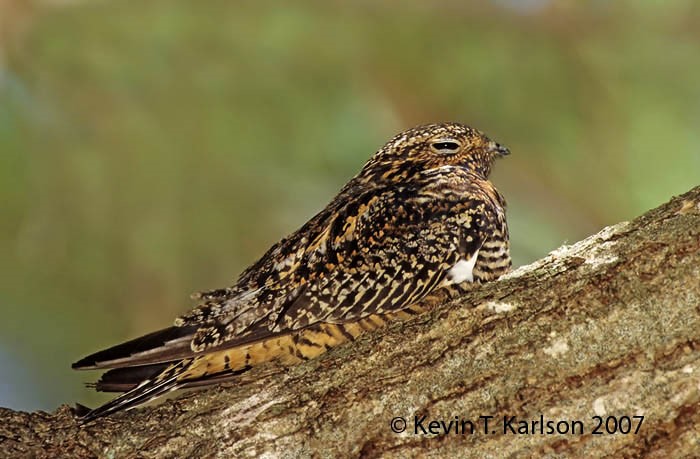
Antillean Nighthawk, female showing predominantly buffy and rusty mottling. (Garden Key, Dry Tortugas National Park, Florida; April 27, 1998.) © Kevin T. Karlson
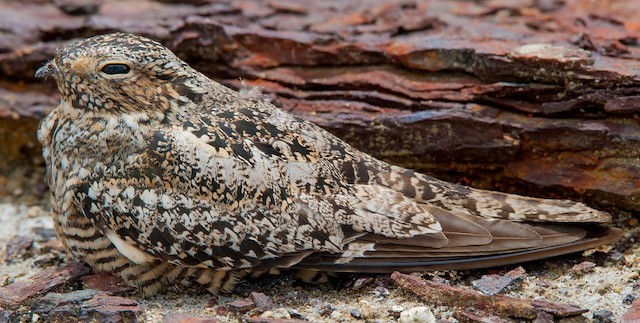
Antillean Nighthawk, a pale individual showing a spectrum of whitish, buffy, and rusty mottling. (Guantánamo Bay, Cuba; May 19, 2018.) © Wayne Fidler
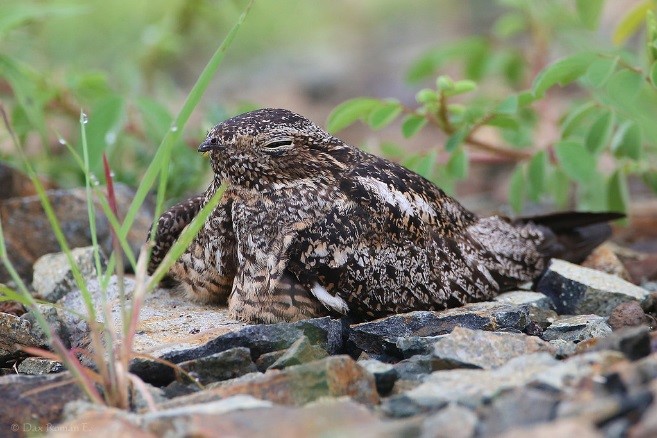
Antillean Nighthawk, with prominent white “braces.” (Lomas Lindas, Dominican Republic; July 5, 2013.) © Dax M. Román E.
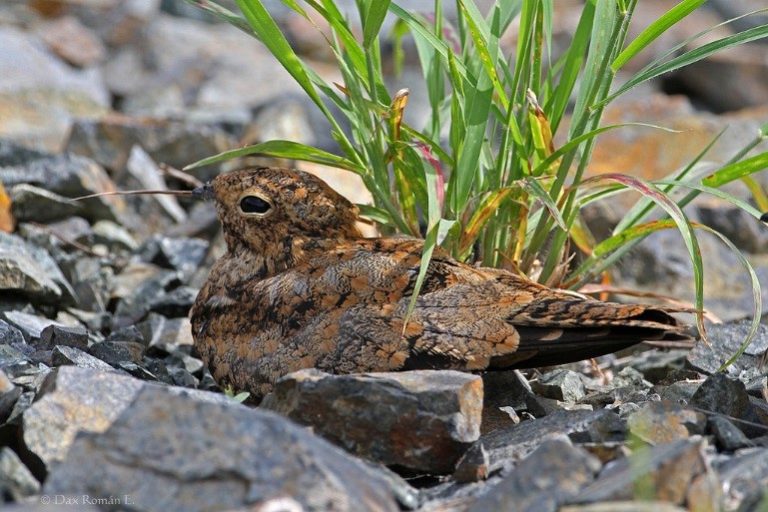
Antillean Nighthawk, female showing exceptionally rufous plumage with leaflike mottling. (Lomas Lindas, Dominican Republic; June 24, 2012.) © Dax M. Román E.
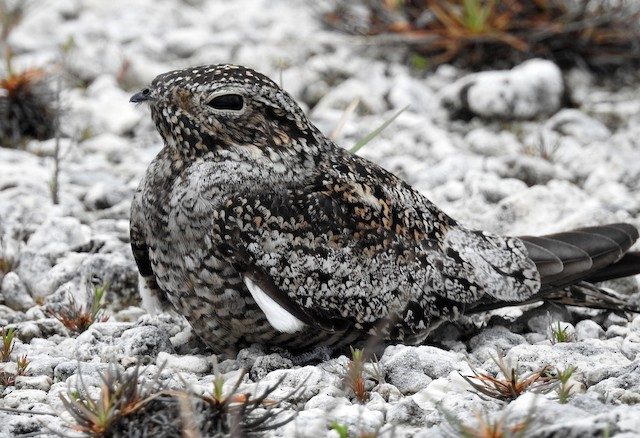
Antillean Nighthawk, female showing predominantly whitish and gray mottling, with some rusty flecks. (Arawak Key, New Providence, Bahamas; May 27, 2018.) © Luis Gonzalez
Nighthawks are most often observed in flight, when their most prominent marking is the white band across the primaries. The size and position of this band on Antillean differ slightly from Common and Lesser Nighthawks. Antillean’s band is generally narrower than Common’s (though the females of both species have narrower bands than the males), and is located closer to the wingtip, an inch or so past the ends of the underwing coverts.

Antillean Nighthawk, male showing position of white band closer to wingtip than wrist. (Salinas de Ponce, Puerto Rico; May 21, 2015.) © Daniele Mitchell

Antillean Nighthawk, male showing position of white band approximately equidistant between wingtip and wrist, but still an inch or so beyond the underwing coverts—also note the white tail band. (Playa Giron, Matanzas, Cuba; April 21, 2012.) © Mark Dennis
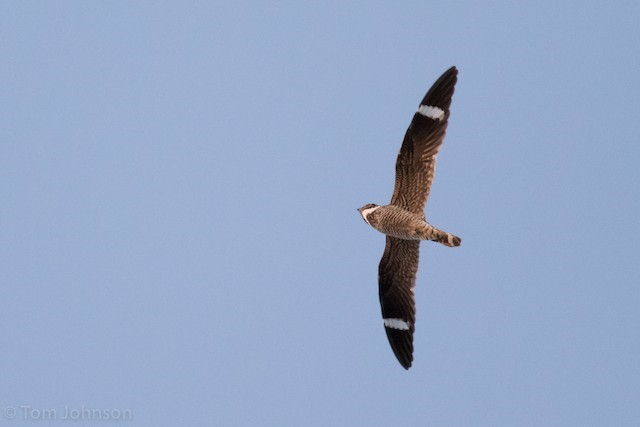
Antillean Nighthawk, male showing position of white band closer to wingtip than wrist. (Key Deer National Wildlife Refuge, Florida; May 6, 2017.) © Tom Johnson
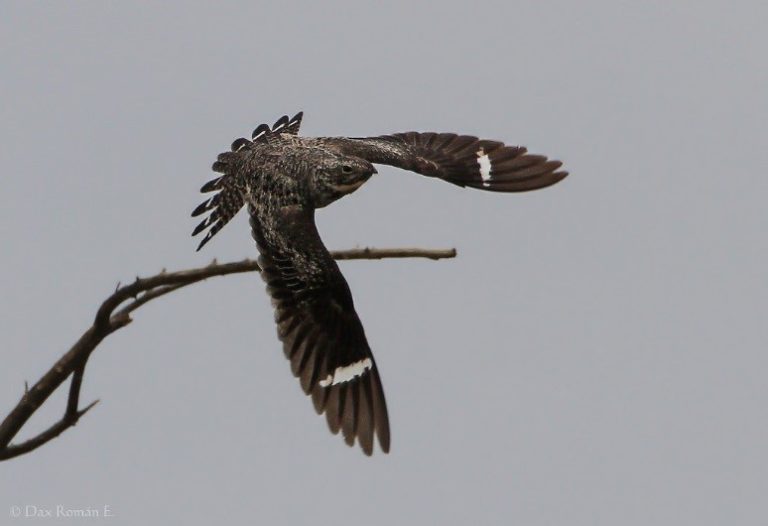
Antillean Nighthawk, male showing position of white band closer to wingtip than wrist—also note white band on uppertail. (Dominican Republic; June 1, 2013.) © Dax M. Román E.
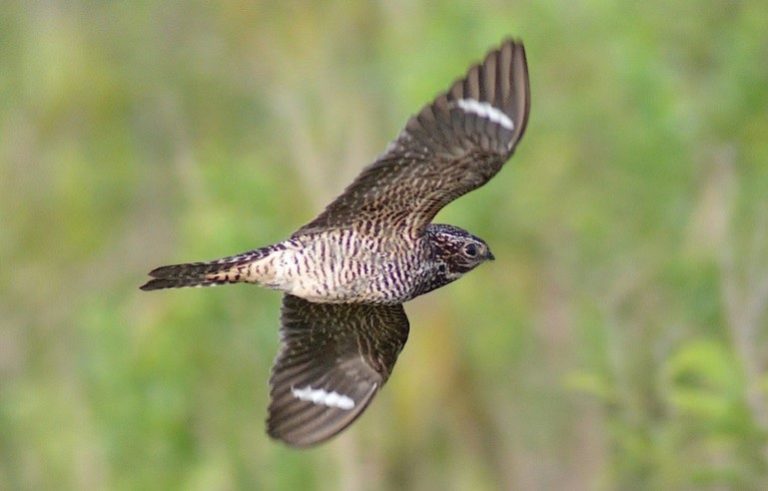
Antillean Nighthawk, female—note narrow wingband located closer to the wingtip than to the wrist, and the lack of a white band on the undertail. (South Abaco, Bahamas; 2014.) © Sandy Walker

Antillean Nighthawk, male showing narrow wingband closer to wingtip than wrist, but only marginally beyond the last upperwing covert. (Dominican Republic; May 30, 2013.) © Dax M. Román E.
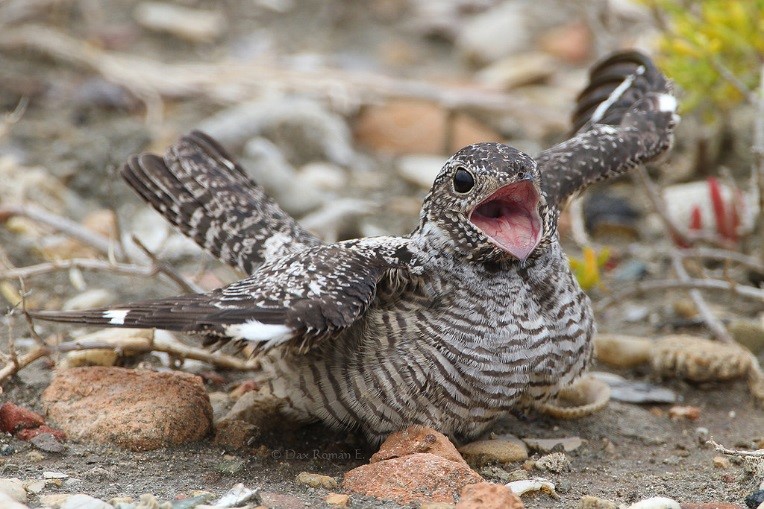
Antillean Nighthawk, male in threat posture. (Dominican Republic; June 1, 2013.) © Dax M. Román E.

Antillean Nighthawk, showing position of white band approximately equidistant between wingtip and wrist—but still an inch or so beyond the underwing coverts. (West End, Grand Bahama; July 21, 2018.) © Erika Gates

Antillean Nighthawk, male showing narrow wingband closer to wingtip than wrist, but only marginally beyond the last upperwing covert—also note the traces of the white band on the uppertail. (Dominican Republic; May 30, 2013.) © Dax M. Román E.

Antillean Nighthawk, male in threat posture. (Dominican Republic; June 1, 2013.) © Dax M. Román E.
Cf. Common Nighthawk. Both Common and Antillean Nighthawks have highly variable plumage, and in many cases they may be visually indistinguishable, so voice is by far the most useful basis for identification. However, they are largely silent away from their breeding grounds—which may in part explain the lack of known records of Antillean Nighthawk in South America, and the ongoing mystery of Antillean’s winter range.
In flight, both species show a prominent white band near the middle of the primaries. Antillean’s bands average narrower and closer to the wingtips than Common’s. However, both the precise location of the band and its width are variable in both species.
Wingband Width: Females of both species have narrower bands than the males, so their width is not always diagnostic. A very wide band likely indicates a male Common, and a very narrow band likely indicates a female Antillean. However, the bands on a typical female Common and a typical male Antillean may be approximately the same width.
Wingband Location: The location of the band on Common Nighthawk is about equidistant between the wrist and the wingtip. On Antillean, the band usually appears to be closer to the wingtip than to the wrist.
Even when closely observed or photographed at rest, the two species are extremely similar, and there is significant overlap in their coloration. Under these circumstances, the following features may enable positive identification in many cases:
Rusty Upperparts and Tawny Underparts: Many Antilleans have bright rusty tones in their upperparts and largely tawny underparts. These colors appear to be diagnostic when present. However, the absence of these colors is not diagnostic, as many Antilleans share the gray-and-black tones typical of Common Nighthawk.
Relative Lengths of Wings and Tail: Common has slightly longer wings that almost always project beyond the tail at rest, whereas Antillean’s wingtips are about even with the tip of the tail. This may be diagnostic in some cases, although there is individual variation within both species, and the comparison in any given case depends in part on how the bird is holding its wings.
Cf. Lesser Nighthawk. Lesser and Antillean Nighthawks presumably occur together in South America, though Antillean goes undetected. Both have highly variable plumage and in many cases may be visually indistinguishable, so voice is by far the most useful basis for identification.
In flight, Lesser differs from both Common and Antillean in the pattern on its wings. Lesser has shorter, more rounded wings (despite its scientific name, which means “pointed wing”), and the white band is closer to its wingtips. If seen well enough, Lesser’s wings show significant barring and spotting throughout the secondaries and on the inner portion of the primaries, in places where both Common and Antillean’s wings are unmarked.
Notes
Polytypic species consisting of two recognized subspecies, gundlachii and vicinus. Formerly considered a subspecies of Common Nighthawk.
Florida Breeding Bird Survey Map: Antillean Nighthawk.
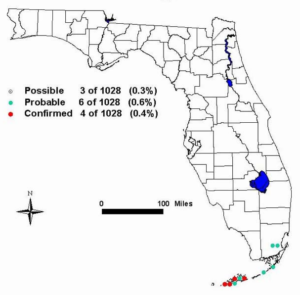
References
Alderfer, J., and J.L. Dunn. 2014. National Geographic Complete Birds of North America (Second Edition). National Geographic Society, Washington, D.C.
Cleere, N., and D. Nurney. 1998. Nightjars: A Guide to Nightjars and Related Nightbirds. Pica Press, Sussex.
Cleere, N., and G.M. Kirwan. 2018. Antillean Nighthawk (Chordeiles gundlachii). In Handbook of the Birds of the World Alive (J. del Hoyo, A. Elliott, J. Sargatal, D.A. Christie, and E. de Juana, eds.). Lynx Edicions, Barcelona. https://www.hbw.com/node/55167. (Accessed July 10, 2018.)
eBird. 2019. eBird: An online database of bird distribution and abundance. Cornell Lab of Ornithology, Ithaca, N.Y. http://www.ebird.org. (Accessed February 5, 2019.)
Garrido, O.H, and A. Kirkconnell. 2000. Field Guide to the Birds of Cuba. Cornell University Press, Ithaca, N.Y.
Haynes-Sutton, A., A. Downer, R. Sutton, and Y.-J. Rey-Millet. 2009. A Photographic Guide to the Birds of Jamaica. Princeton University Press, Princeton, N.J.
Latta, S., C. Rimmer, A. Keith, J. Wiley, H. Raffaele, K. McFarland, and E. Fernandez. 2006. Birds of the Dominican Republic and Haiti. Princeton University Press, Princeton, N.J.
Raffaele, H., J. Wiley, O. Garrido, A. Keith, and J. Raffaele. 1998. A Guide to the Birds of the West Indies. Princeton University Press, Princeton, N.J.
Rolling Harbour Abaco, Antillean Nighthawk, https://rollingharbour.com/tag/antillean-nighthawk-abaco/. (Posted July 13, 2017. Accessed September 14, 2017.)
Sibley, D.A. 2014. The Sibley Guide to Birds (Second Edition). Alfred A. Knopf, New York.
Wells, J.V., and A.C. Wells. 2017. Birds of Aruba, Bonaire, and Curaçao. Cornell University Press, Ithaca, N.Y.
